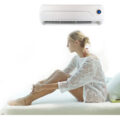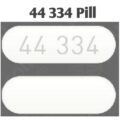Headache is the symptom of pain in the face, head, or neck that can occur as a result of many conditions. There are a number of different classification systems for headaches. The most well-recognized is that of the International Headache Society.
Causes of headaches may include dehydration, fatigue, sleep deprivation, stress, the effects of medications and recreational drugs, including withdrawal, viral infections, loud noises, common colds, head injury, rapid ingestion of a very cold food or beverage, and dental or sinus issues (such as sinusitis).
How common are headaches in adults?
If your head is throbbing, you’re not alone. Headache is one of the most common pain conditions in the world. Up to 75% of adults worldwide have had a headache in the past year.
Headaches are a major cause of absenteeism from work and school. They also take a toll on social and family life. For some people, continually battling headaches can lead to feeling anxious and depressed.
What are Types of Headaches?
According to Harvard Health, there are more than 300 types of headaches, but only about 10% of headaches have a known cause. The others are called primary headaches. Here is a rundown on some major primary headaches:
Tension headaches
Occurring in about three of every four adults, tension headaches are the most common of all headaches. In most cases, they are mild to moderate in severity and occur infrequently. But a few people get severe tension headaches, and some are troubled by them for three or four times a week.
The typical tension headache produces a dull, squeezing pain on both sides of the head. People with strong tension headaches may feel like their head is in a vise. The shoulders and neck can also ache. Some tension headaches are triggered by fatigue, emotional stress, or problems involving the muscles or joints of the neck or jaw. Most last for 20 minutes to two hours.
If you get occasional tension-type headaches, you can take care of them yourself. Over-the-counter pain relievers such as acetaminophen (Tylenol, other brands) and nonsteroidal anti-inflammatories (NSAIDs) such as aspirin, naproxen (Aleve, other brands), or ibuprofen (Motrin, Advil, other brands) often do the trick, but follow the directions on the label, and never take more than you should. A heating pad or warm shower may help; some people feel better with a short nap or light snack.
If you get frequent tension-type headaches, try to identify triggers so you can avoid them. Don’t get overtired or skip meals. Learn relaxation techniques; yoga is particularly helpful because it can relax both your mind and your neck muscles. If you clench your jaw or grind your teeth at night, a bite plate may help.
If you need more help, your doctor may prescribe a stronger pain medication or a muscle relaxant to control headache pain. Many people with recurrent tension-type headaches can prevent attacks by taking a tricyclic antidepressant such as amitriptyline (Elavil, generic). Fortunately, most people with tension-type headaches will do very well with simpler programs.
Migraine
Migraines occur less often than tension headaches, but they are usually much more severe. They are two to three times more common in women than men, but that’s small consolation if you are among the 6% to 8% of all men who have migraines. And since a Harvard study of 20,084 men age 40 to 84 reported that having migraines boosts the risk of heart attacks by 42%, men with migraines should take their headaches to heart.
Neurologists believe that migraines are caused by changes in the brain’s blood flow and nerve cell activity. Genetics play a role since 70% of migraine victims have at least one close relative with the problem.
Migraine triggers. Although a migraine can come on without warning, it is often set off by a trigger. The things that set off a migraine vary from person to person, but a migraine sufferer usually remains sensitive to the same triggers. The table lists some of the most common ones.
Major migraine triggers
- Changing weather: rising humidity, heat
- Lack of sleep or oversleeping
- Fatigue
- Emotional stress
- Sensory triggers: bright or flickering lights, loud noises, strong smells
- Dietary triggers:
o missing a meal
o alcohol, especially red wine
o chocolate
o nitrates in cured meats and fish
o aged cheese
o an increase or decrease in caffeine
o MSG (often present in Asian and prepared foods)
Migraine symptoms. Migraines often begin in the evening or during sleep. In some people, the attacks are preceded by several hours of fatigue, depression, and sluggishness or by irritability and restlessness. Because migraine symptoms vary widely, at least half of all migraine sufferers think they have sinus or tension headaches, not migraines.
About 20% of migraines begin with one or more neurological symptoms called an aura. Visual complaints are most common. They may include halos, sparkles or flashing lights, wavy lines, and even temporary loss of vision. The aura may also produce numbness or tingling on one side of the body, especially the face or hand. Some patients develop aura symptoms without getting headaches; they often think they are having a stroke, not a migraine.
The majority of migraines develop without an aura. In typical cases, the pain is on one side of the head, often beginning around the eye and temple before spreading to the back of the head. The pain is frequently severe and is described as throbbing or pulsating. Nausea is common, and many migraine patients have a watering eye, a running nose, or congestion. If these symptoms are prominent, they may lead to a misdiagnosis of sinus headaches. One way to remember the features of migraine is to use the word POUND
P is for pulsating pain
O for one-day duration of severe untreated attacks
U for unilateral (one-sided) pain
N for nausea and vomiting
D for disabling intensity.
Without effective treatment, migraine attacks usually last for four to 24 hours. When you’re suffering a migraine, even four hours is far too long — and that’s why early treatment for a migraine is so important.
Migraine treatment. If you spot a migraine in its very earliest stages, you may be able to control it with nonprescription pain relievers. Acetaminophen, aspirin, ibuprofen, naproxen, and a combination of pain medications and caffeine are all effective — if you take a full dose very early in the attack.
When prescription drugs are needed, most doctors turn to the triptans, which are available as tablets, nasal sprays, or as injections that patients can learn to give to themselves. Examples include sumatriptan (Imitrex), zolmitriptan (Zomig), and rizatriptan (Maxalt). Triptans provide complete relief within two hours for up to 70% of patients; the response is best if treatment is started early. Some patients require a second dose within 12 to 24 hours. Patients with cardiovascular disease and those who take a high dose of certain antidepressants need to discuss the risks of using them with their doctor.
Work with your doctor to find the migraine treatment that works best for you. Remember, though, that overuse can lead to rebound headaches and a vicious cycle of drugs and headaches. So, if you need treatment more than two or three times a week, consider preventive medications.
Migraine prevention. Some people can prevent migraines simply by avoiding triggers. Others do well with prompt therapy for occasional attacks. But patients who suffer frequent migraine attacks often benefit from preventive medications. Effective prescription drugs include beta blockers (such as propranolol, nadolol and atenolol), certain antidepressants (such as amitriptyline), and certain anti-seizure medications (such topiramate and valproate). Difficult cases may benefit from referral to a headache specialist.
Cluster headaches
Cluster headaches are uncommon but very severe headaches, and they occur five times more often in men than women. Although anyone can get cluster headaches, the typical patient is a middle-aged man with a history of smoking.
The problem gets its name because the headaches tend to come in clusters, with one to eight headaches a day during a one- to three-month period every year or two, often at the same time of year. The pain always strikes one side of the head and is very severe. The eye on the painful side is red and watery, the eyelid may droop, and the nose runs or is blocked. The attack starts abruptly and lasts for 30 to 60 minutes. Most sufferers become restless and agitated during the attack; unable to sit still, they pace, jog in place, or beat their head against a wall. Nausea and sensitivity to light and sound may accompany the pain.
Inhaling high flow oxygen soon after the onset of the headache can often stop the attack. Sumatriptan is often effective for cluster headaches, particularly when given by injection. Other triptans may also help. Some patients favor lidocaine nose drops, dihydroergotamine injections, or other treatments. The most effective medication for preventing cluster headache attacks is verapamil, a calcium-channel blocker. Other drugs that may help include divalproex, topiramate, and lithium.
Other types of headaches
Doctors have diagnosed hundreds of conditions associated with headaches. Here are just a few:
Medication headaches. Many drugs number headaches among their side effects. And although it seems paradoxical, many medications used to treat headaches can also cause medication overuse headaches or rebound headaches. Migraine sufferers are particularly vulnerable to a vicious cycle of pain leading to more medication, which triggers more pain. If you have frequent headaches and use medication, OTC or prescription, or both, for more than 10 to 15 days a month, you may have medication overuse headaches. The way to find out is to discontinue or taper your medication — but always consult your doctor first. A corticosteroid such as prednisone may help control pain during the withdrawal period.
Sinus headaches. Acute sinusitis causes pain over the forehead, around the nose and eyes, over the cheeks, or in the upper teeth. Stooping forward increases the pain. Thick nasal discharge, congestion, and fever pinpoint the problem to the sinuses. When the acute infection resolves, the pain disappears. Sinusitis is not a common cause of chronic or recurrent headaches.
Ice cream headaches. Some people develop sharp, sudden headache pain when they eat anything cold. The pain is over in less than a minute, even if you keep eating. If you are bothered by ice cream headaches, try eating slowly and warming the cold food at the front of your mouth before you swallow it.
Headache from high blood pressure. Except in cases of very high blood pressure, hypertension does not cause headaches. In fact, most people with high blood pressure don’t have any symptoms at all, and a study of 51,234 people reported that hypertension was associated with a reduced incidence of headaches. But that’s no reason to neglect your blood pressure. Hypertension leads to strokes, heart attacks, heart failure, and kidney disease, so all men should have their pressure checked, and then take steps to correct abnormalities.
Headache from exercise and sex. Sudden, strenuous exercise can bring on a headache. Gradual warm-ups or treatment with an anti-inflammatory medication before exercise can help. Sexual intercourse may also trigger headaches; some men note only dull pain, but others suffer from severe attacks called orgasmic headaches. Some people can prevent orgasmic headaches by taking an NSAID 30 to 60 minutes before intercourse.
Headache testing
Modern medicine depends on tests to diagnose many problems. For most headaches, though, a good old-fashioned history and physical will do the job. In fact, CT scans, MRIs, and EEGs (brain wave tests) look normal in tension-type headaches, migraines, and cluster headaches. Still, these tests can be vital in patients with warning signs or other worrisome headaches. READ: Causes of Air Condition Headaches






